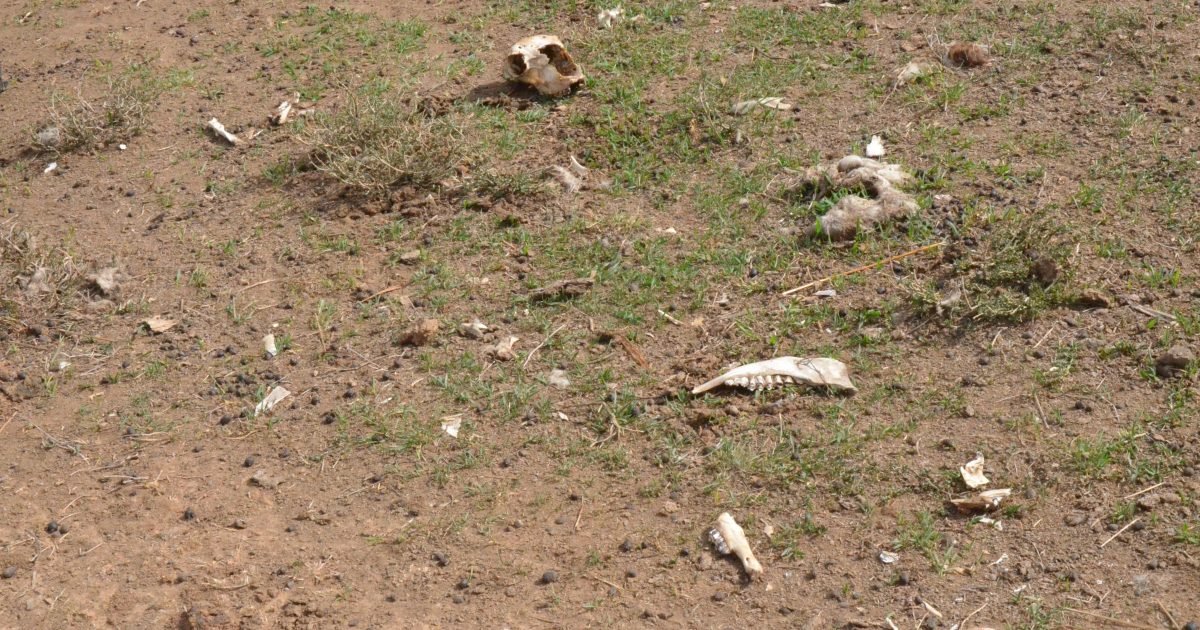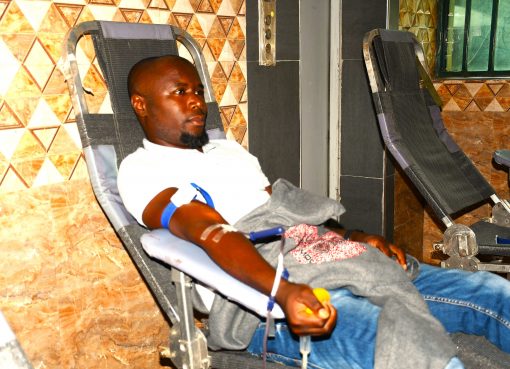The time is 2.45 pm. As we leave Naro Moru town, heavy dark clouds are hovering in the heavens, perhaps a sign of good things to come. In the distant east is the silhouette of Mount Kenya partly covered in the engulfing heavy clouds. Here people are going about their normal businesses as they have perhaps done for years.
Business is brisk as this town happens to lie along the busy highway that leads to far flung towns of Nanyuki, Isiolo, Marsabit and Moyale. Among the most conspicuous occupations to find here include eateries and inns which are often frequented by both residents and travelers.
Yet this apparent normalcy belies a serious social crisis, many of the families living in villages around these colonial-era urban centers are going without food, at times, for days.
Earlier on while driving to this town situated along the Nyeri-Nanyuki road we passed stretches of expansive ranches that have been reduced to wastelands. Majority of these parcels of land are owned by influential Kenyans and foreigners who wanted to turn them into hay or wheat farms.
But today the former lush rolling meadows are a far cry with only dry tufts of short elephants’ grass and few scattered acacias doting the baked earth.
During the rainy days, these sprawling rangelands used to teem with hundreds of cattle but have now been reduced to wastelands akin to the American Wild West.
“Things have never been this bad. It is unbelievable how nature can suddenly turn rogue and reduce everything to nothing,” says Nakori Lorono, a pastoralist from Samburu who has pitched up tent along the busy highway together with his animals.
“I have lost more than 100 of my animals to this drought and I fear I may soon end up losing everything unless it rains or the government comes to my rescue,” laments the 47-year-old herder.
As we converse with him over the effects of the drought, we realize his remaining cattle and goats are lying down in the makeshift enclosure erected with thorny acacia branches and covered from outside with old dusty polythene curtains fluttering in the afternoon howling winds like ill put-up sails.
Normally, the animals are let out from sundown for grazing when temperatures start dipping since at such times, they can walk tens of kilometers in search of pastures and water without running the risk of dehydration and exhaustion.
“I normally allow the animals to rest during the day to keep them away from the baking heat. This is the only way I can save the few animals left after losing many of them due to the current dry condition. Hopefully when it rains, I will plan to go back to my home and settle down with my family,” he adds.
In the entire county of Nyeri, Kieni constituency has borne the brunt of the drought for the last three years in a row. Many of the people residing in this area are now looking up to the government for help after waiting for elusive rains for close to four years.
The aftershocks of the Covid-19 pandemic has not made things any better after many thriving employment opportunities disappeared.
Cecilia Mwangi, a resident of Chaka is one such victim. At 23 years (but appearing to be in her fifties due to the vagaries of life), she has seen life taking a twist to the worst after many of those whom she used to work for said they were no longer able to pay for her services due to the harsh economic times.
Her estranged husband who works at a local smithery yard did not make things better after he abandoned her for another woman.
Rejected by the only person she could have run to for help, Ms. Mwangi has now been reduced to a beggar, waiting for well-wishers to dole out alms to enable her to feed her six children.
“I am on my own after my husband left me. There were times I used to fend for my family since people used to hire me on a casual basis but things have now changed and nobody is willing to hire you. It is really painful to see your children going to school on empty stomachs because you cannot provide anything for them to eat,” laments Ms. Mwangi while leaning against her deplorable hovel donated to her by a well-wisher.
Lydia Waithira, the local village leader says Ms. Mwangi’s case was not an exception but just one among many in the area. She told the press many families in the region are undergoing tough times owing to lack of food.
The problem has been exacerbated by declining activities in the nearby quarry mines that had been Chaka’s lifeline for years. Without a source of steady income and with a punishing drought, the situation almost comes to a near disaster.
“Many families around this area are doing with a single meal or none since there is practically nothing in the farms and no money to buy food from the markets. This week alone we had to resuscitate a woman who was with a child after she fainted due to starvation. She is still in hospital receiving medical assistance,” narrates Waithira.
Kieni East location chief Paul Manyuria says residents of the three sub locations of Nderiti, Narumoru and Gaturiri have not received rain since 2019, a situation which has put more than 3,000 families in desperate need for relief food.
The administrator reveals that the majority of families here are literally going hungry for days after having lost their entire crops and livestock to drought.
The situation has sincerely impacted the learning for hundreds of pupils who have either been forced to trek to school on empty stomachs or abscond classes altogether.
Even efforts by the government to distribute relief food in the area has done little to address the challenge owing to the staggering number of families in need of help.
“We have been staring at a humanitarian crisis since 2019 here owing to failed rains. Majority of the families have literally nothing to live on. The Government did send a consignment of relief food comprising rice and beans on October 11 but this could not cater for those who turned out. Whereas the food was meant for 200 families, the number of those who came out was 7,000 meaning many went home disappointed,” he told us when we visited his office.
The administrator nevertheless says the Government was aware of the situation and they are hoping some additional food will be dispatched in coming days.
A report released by the National Drought Management Authority (NDMA) in September warned that 55,725 people in Kieni Constituency were in dire need of food assistance.
The report had listed Mugunda, Gatarakwa, Githima, Lusoi and Thegu as the worst hit areas in need of urgent relief supplies. The report also revealed that over 30,000 livestock were on the brink of starvation.
It singled out Karemeno, Lamuria, Ruirii, lower Mwiyogo, Muthuini and Labura in Kieni West Sub-County, Thungari, Gathiuru and Rongai in Kieni-East Sub County as areas hardest hit by drought and depleted of pasture.
“The available pasture is likely to last for a month in the mixed farming zones while in most marginal farming zones, it is likely to last less than a month,” said the report then.
Kieni-East Deputy County Commissioner, Okaka Etiyang says the situation is dire adding that other places such as Thung’ari, Gakara and Naromuro town were quickly joining the list of areas for consideration.
Additionally, the DCC noted that there was still need for urgent intervention given that part of the aid was distributed to primary schools as a way of keeping learners in school.
“The little intervention we received from the government is not enough. We are anticipating more relief supplies so if it comes earlier, the better because we have a number of people who are in need. From what we received the last time, we have given some of it to primary schools so that we can keep our children in school,” he said.
Kenya is facing one of her worst food crisis in decades following four consecutive failed rain seasons.
This situation has pushed more than 4 million Kenyans to the brink of a humanitarian crisis with hundreds of animals already reported to have died in the former Northern Frontier Districts.
Already the Government has kicked off the process of distributing relief food to the affected counties even as some leaders urge the president Dr William Ruto to declare the current drought a national disaster.
World Food Programme Representative and Country Director for Kenya Lauren Landis in a statement to mark this year’s World Food Day said the international community is solidly behind the country in providing relief help to starving communities including scaling up food distribution.
She nevertheless called for a shift in alternative food rearing mechanisms including adoption of drought resistant crops able to withstand the adverse effects of global climatic changes.
“Humanitarian assistance alone will never be enough in Kenya’s increasingly dry and drought-prone climate. The key to better nutrition lies in profound agricultural shifts, such as adoption of drought-tolerant crops and water-efficient farming techniques, production of more nutritious crops like high-iron beans, improving postharvest storage, enhancing processing, reducing food losses, improving food safety, and establishing better connections to markets,” stated the official.
By Samuel Maina and Wangari Mwangi





